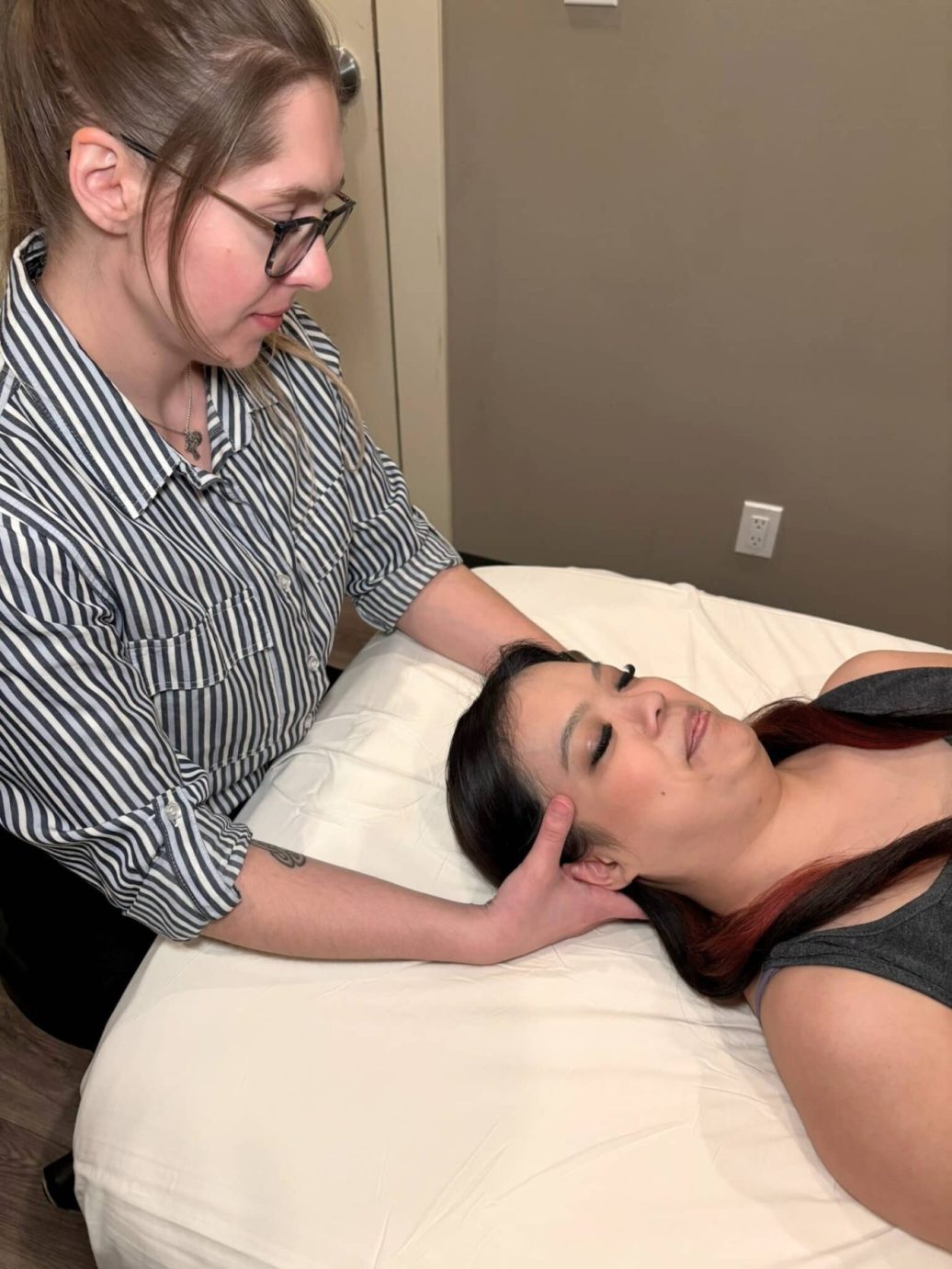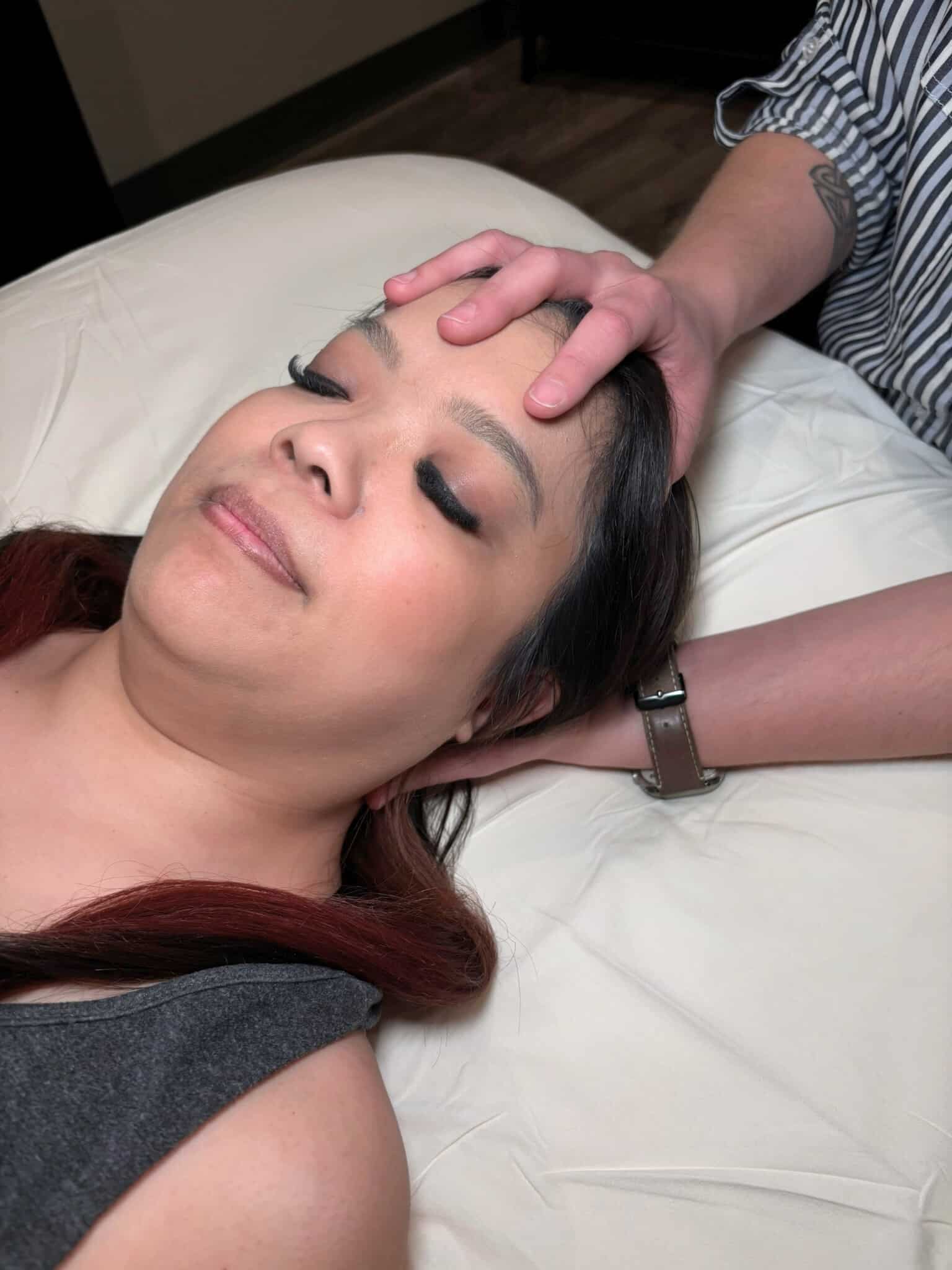
Have you ever felt a whisper of tension clinging to the base of your skull, a persistent throb behind your eyes, or a deep ache that no amount of stretching seems to soothe? Craniosacral massage is a gentle, non-invasive therapy that targets the craniosacral system—the membranes and fluids surrounding the brain and spinal cord—to release tension, reduce pain, and support the central nervous system. It is commonly used to promote deep relaxation, relieve chronic pain, and improve overall health. As you settle onto the massage table, the soothing environment envelops you, inviting you to shed the weight of your worries.
Craniosacral therapy focuses on the body’s connective tissue, primarily the fascia surrounding organs, muscles, and the nervous system. Craniosacral therapists use soft tissue manipulation techniques to release restrictions and restore balance throughout the body. South West Massage & Wellness explains, “Craniosacral Therapy (CST) is a gentle, hands-on technique that helps release tension and optimize the movement of cerebrospinal fluid (CSF), which surrounds and cushions the brain and spinal cord. Practitioners use light touch to assess and enhance the body’s natural cerebrospinal rhythm, helping to restore balance in the nervous system.”
Research indicates that craniosacral therapy helps relieve various ailments, including headaches, neck pain, and stress-related disorders.
Craniosacral massage, also known as craniosacral therapy (CST), employs gentle pressure and light touch to facilitate healing within the craniosacral system.. During a craniosacral therapy session, the massage therapist uses light touch techniques to identify and release fascial restrictions in the connective tissues encasing the cranial bones and spinal column. This process helps alleviate tension and improve blood circulation, providing pain relief for conditions such as chronic pain, migraines, and neck pain. By facilitating the movement of CSF and restoring the normal cranial rhythmic impulse, practitioners enable the body to achieve self-correction and greater overall well-being.
Additionally, craniosacral therapy promotes a balance within the autonomic nervous system, guiding it from a stress-dominant state to a parasympathetic state conducive to healing. By improving mobility in key areas like the sacrum and occiput, CST fosters better fluid dynamics and enhances nervous system function. Research, including systematic reviews and randomized controlled trials, demonstrates that craniosacral therapy effectively addresses various medical conditions while providing deep relaxation and stress relief. This holistic approach is recognized as a valuable alternative therapy for individuals seeking non-invasive methods to improve their health.
Many people find CST to be deeply restorative, offering a unique blend of physical and emotional relief.
Understanding the research surrounding CST can clarify how this gentle, hands-on therapy may help alleviate headaches and tension-related issues. While ongoing studies are contributing to our knowledge base, several clinical findings already illustrate the potential benefits of craniosacral massage. As stated by South West Massage & Wellness, “Research on craniosacral therapy (CST) for headaches and tension is still developing, but many studies show positive results.”
Here’s a summary of the available evidence regarding craniosacral therapy:
Ongoing research suggests several potential mechanisms through which CST may alleviate headaches:
According to South West Massage & Wellness, “Current research suggests CST may be beneficial for some headache sufferers, especially those with tension-type headaches or migraines. While the evidence is promising, more rigorous studies are needed to establish it as a mainstream treatment.”
Current research suggests that craniosacral therapy may benefit some headache sufferers, particularly those experiencing tension-type headaches or migraines. As indicated by South West Massage & Wellness, “Many people find CST to be deeply restorative, offering a unique blend of physical and emotional relief.” While more comprehensive studies are needed to establish it as a mainstream treatment, the existing clinical evidence is promising.
Suppose you’re interested in exploring craniosacral massage for headache relief or other benefits. In that case, consulting with a qualified massage therapist can provide valuable insight into whether this gentle yet effective treatment is right for you.

When you arrive for a craniosacral therapy session, you can anticipate a calm and nurturing environment designed to facilitate deep relaxation and healing. Here’s what you can expect during your session:
Craniosacral therapy (CST) can help many individuals alleviate tension and improve overall health. However, certain conditions may warrant caution or contraindicate the use of craniosacral massage altogether. Understanding these limitations is crucial for ensuring safety and effectiveness in treatment. Below is a summary of specific conditions and situations where craniosacral massage might not be recommended:
Recent concussions, skull fractures, or brain injuries require medical clearance before undergoing CST. It’s generally advised to wait at least two weeks post-concussion to begin treatment.
Conditions like hydrocephalus or brain hemorrhage may worsen with CST and should be avoided.
Manipulating the craniosacral system could pose a risk of rupture for individuals with this condition.
Clients with conditions like hemophilia or those on blood thinners should avoid techniques that involve deep pressure.
Any vascular event in the brain requires medical evaluation prior to CST to ensure safety.
Individuals with schizophrenia, bipolar disorder, or dissociative disorders may require guidance from a mental health professional before trying CST.
Conditions such as meningitis or encephalitis are medical emergencies and contraindicate CST.
When considering craniosacral therapy, it’s essential to be aware of certain precautions to ensure a safe and effective experience. Understanding these precautions helps to maximize the benefits of craniosacral massage while minimizing potential risks.
Taking the necessary precautions when engaging in craniosacral therapy can help maximize its pain relief and stress relief benefits. Always consult with your massage therapist and healthcare provider to tailor treatments appropriately, ensuring a safe and beneficial experience for your health and wellness journey.
A craniosacral massage offers a unique experience aimed at restoring balance and promoting healing throughout the body. This gentle massage therapy has the potential to address a range of medical conditions and enhance your quality of life. Let go of the burdens of stress and anxiety. With each craniosacral session, you’ll find moments of peace and clarity. Make your appointment today.